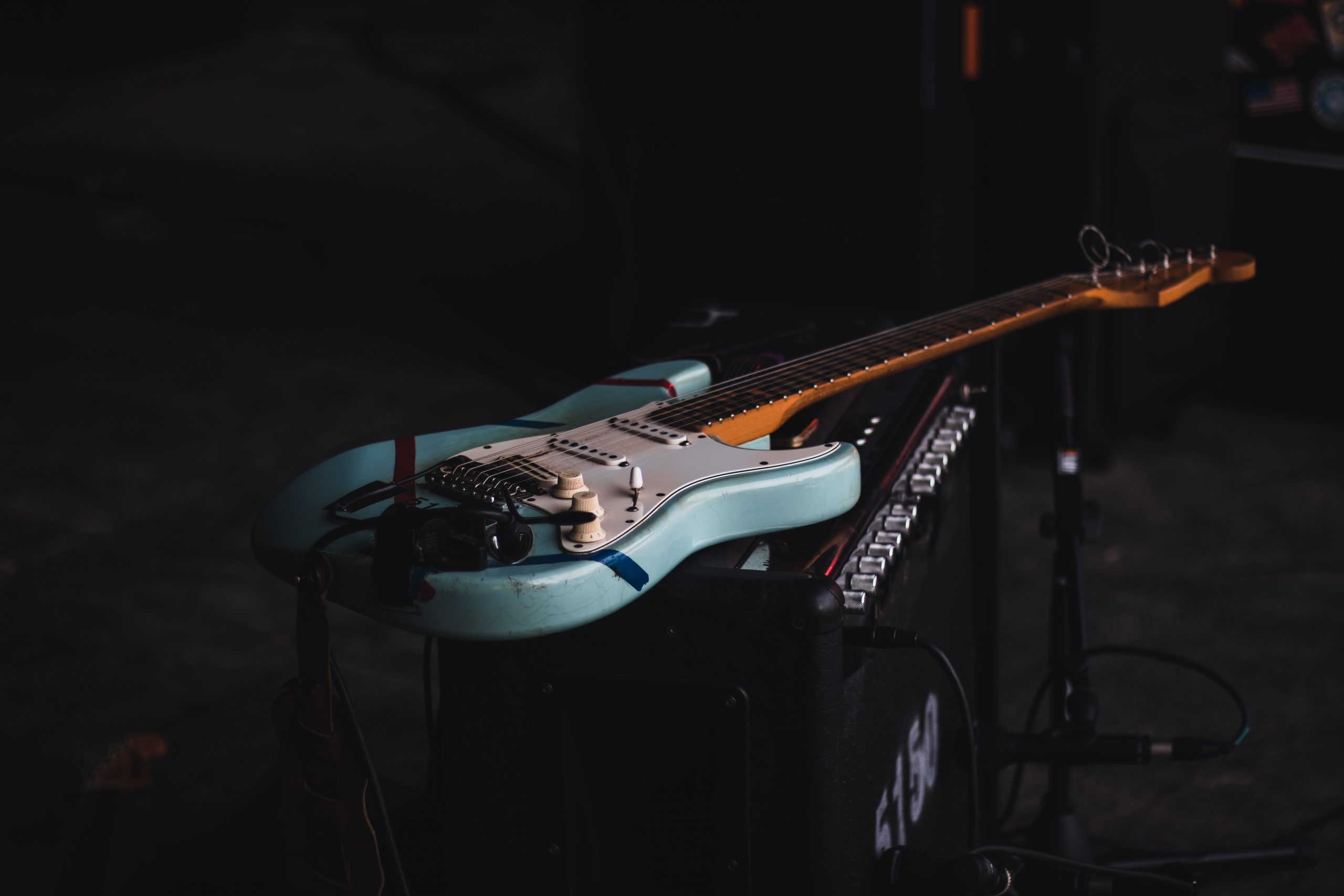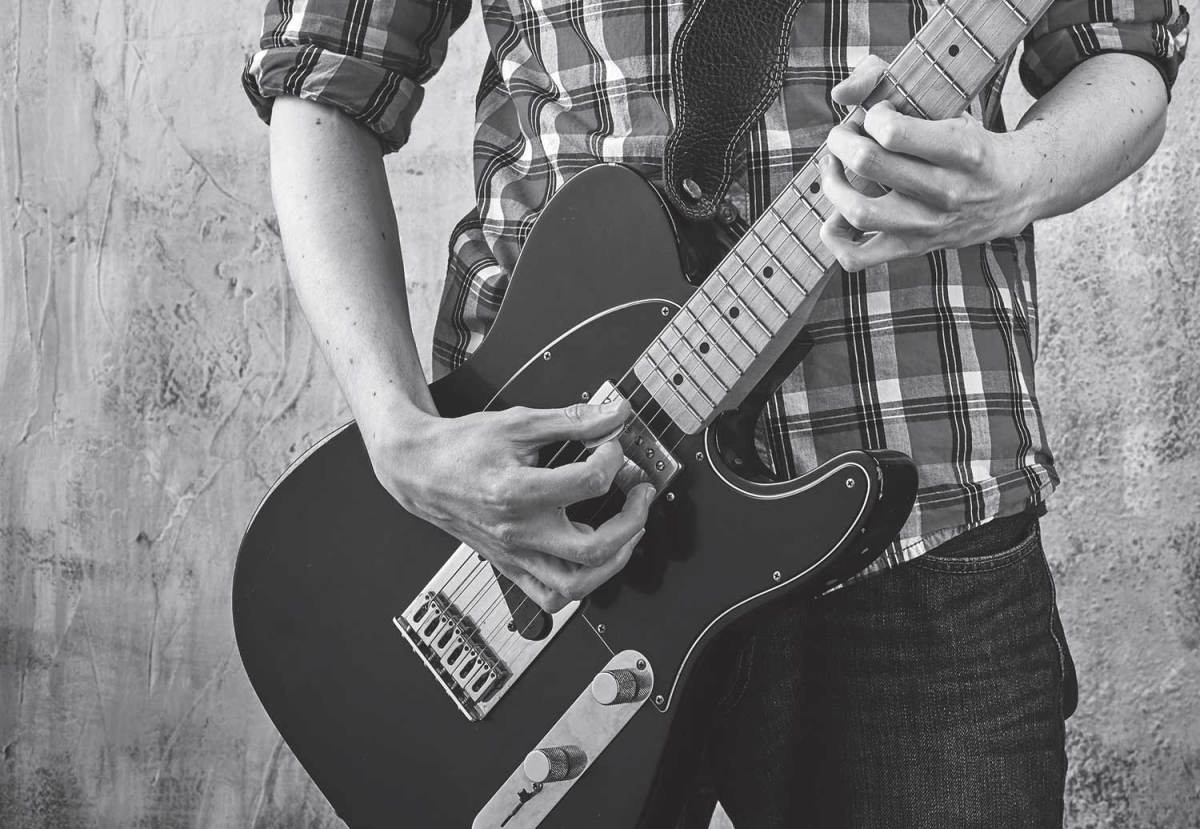This is something that a lot of players dismiss because they think they must learn 5 or 7 patterns for each scale in all keys, which if you think about it is probably not the most effective method on an instrument where any shape or pattern, once learned, can be easily transposed both to any other key, as well as across sets of strings. What’s more, the advantages of using one scale pattern are numerous: you have far less to remember, you can find what you need quicker, the notes always fall in the same place with virtually the same fingerings, and your focus is shifted from trying to remember patterns to the sound of a handful of notes within a small pattern.
Trust me, you’ll get far more out of a one-octave scale pattern sound-wise than you will out of five CAGED or seven vaguely learned 3NPS patterns.
The other great thing about using just one scale pattern is the ability to learn multiple scales, which is exactly what we’re going to do. In fact, in the time you spend on this lesson, you’d probably only learn a couple of CAGED patterns for one scale in one key.
The Default Scale
We’re going to use the major scale as our ‘default scale’. I call it the default scale because it has no alterations to its intervals.
It’s always 1, 2, 3, 4, 5, 6, 7.
All our examples will be in G.
Here’s our first pattern:

For these patterns, we’re going to restrict ourselves to a one-octave 3NPS type scale pattern with two added notes at either end. I find these two added notes really help when it comes to phrasing, which is what we want to develop, as well as giving you just enough notes to be dangerous.
We can also start this pattern on the A string:

As you can see, it’s the same as the first pattern.
Let’s move the whole thing to the next set of strings (D-G-B):

As you can see, the notes on the B string have shifted up one fret. This is because of the guitar’s tuning; hence the pattern is essentially the same.
Finally, we can start this pattern on the G string. Here it is alongside the previous pattern:

Once again, the phenomenon of the guitar’s tuning means that the notes on the B and E strings are shifted up a fret, but it’s essentially the same pattern.
If you put these four patterns together, we’d cover a lot of ground on the fretboard:

This is just to show you that you’re not really missing out on anything the multiple CAGED and 3NPS patterns have to offer, especially when it comes to learning more than one type of scale.
Easy Lydian
This is where using just one scale pattern really comes into its own. We can get to the Lydian mode by changing just one interval: the 4 to a #4. It sounds great over major, major 7 chords and especially the maj7#11 chord.

Again, use the extra notes to compliment your phrasing and see what you can come up with. We can move this pattern as we did with the major scale one.

Here we have the same pattern starting on the A string.
Next up is the pattern starting on the D string:

And here’s the pattern that starts on the G string with the D string one for reference:

With a little practice, you should be able to roam quite freely on the fretboard. The trick is to know exactly where you are and what you’re playing; this is the problem with the clunky CAGED and 3NPS patterns, as it’s far easier just to run up and down the pattern in a hit and miss fashion.
You now have two major scales at your disposal with relatively little thinking involved, let’s add a third.
Easy Mixolydian
You can probably see why I call the major scale the ‘default setting’ as it can easily be modified to reach other useful scales such as this one. Again, we’re changing just one note from the major scale: the 7 to a b7.
Here’s your first diagram:

The Mixolydian scale is about as symmetrical as it gets and sounds great in a blues over dominant 7, 9 and 11 chords.
Here’s the pattern that starts on the A string:

If you want to create longer runs, feel free to link up these patterns.
Here’s our D-string pattern:

As you can see, the notes on the B string are offset by one fret, but it’s essentially the same pattern.
And finally, the G-string pattern alongside the above one:

What about chords?
We now have three major scales at our disposal, but what chord progressions
can you use them over? You can find the theory behind this elsewhere
on the site, so what I’d like you to do is experiment by coming up with a
chord progression using the chords below (you don’t have to use all of them,
just make sure your progression resolves to whatever the G chord is):
G Major:
G | Am | Bm | C | D | Em | F#°
or
Gmaj7 | Am7 | Bm7 | Cmaj7 | D7 | Em7 | F#m7b5
G Lydian:
G | A | Bm | C#° | D | Em | F#m
or
Gmaj7 | A7 | Bm7 | C#m7b5 | Dmaj7 | Em7 | F#m7
G Mixolydian:
G | Am | B° | C | Dm | Em | F
or
G7 | Am7 | Bm7b5 | Cmaj7 | Dm7 | Em7 | Fmaj7
In Part 2, we look at minor, dominant and other useful scales.




Nice method…